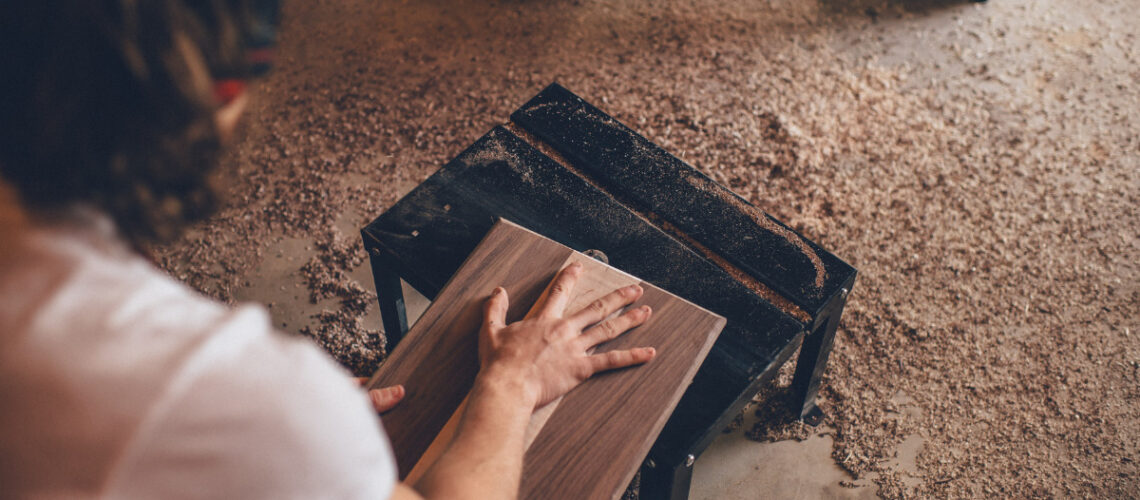Woodworking, an age-old craft, continues to evolve, offering ever-new possibilities for creativity and expression. For those who have mastered the basics and are looking to elevate their skills, advanced woodworking techniques can open up a world of intricate designs and refined craftsmanship. Expert woodworker Scott Biski from New York is among those who have honed these advanced skills to create exceptional pieces. In this article, we delve into several advanced techniques that aspiring artisans can learn to enhance their woodworking prowess.
Mastering Joinery
One of the hallmarks of advanced woodworking is the mastery of joinery. Joinery involves connecting two pieces of wood to form a more complex item. While there are many types of joints, some advanced options offer both strength and aesthetic appeal.
Dovetail Joints
Dovetail joints are renowned for their resistance to being pulled apart and their attractive appearance. They are commonly used in making drawers, cabinets, and various types of boxes. Mastering the dovetail requires precision in cutting the interlocking parts, which can be quite challenging but immensely rewarding.
Mortise and Tenon Joints
This ancient joint has stood the test of time due to its strength and simplicity. It involves fitting a tenon (a protruding piece of wood) into a mortise (a corresponding hole). This joint is versatile and can be adapted to many projects, from furniture to door frames.
Implementing Inlays and Marquetry
Inlay and marquetry work involve embedding pieces of different materials into wood, creating a surface with intricate designs and patterns. This technique can elevate a simple piece to a work of art.
Wood Inlays
Wood inlays involve carving out a portion of the wood surface and then inserting a piece of different wood, or another material, into the cavity. This requires precise cutting and fitting, often using specialized tools such as routers and chisels.
Marquetry
Marquetry is the art of creating pictures or patterns using thin veneers of different woods. This technique has been used historically to create intricate decorative surfaces on furniture and small objects. It demands a great deal of patience and a steady hand for cutting and fitting the veneers.
Carving and Sculpting
Wood carving and sculpting are skills that allow a woodworker to add detailed decorations and motifs to their work. These techniques can range from basic decorative elements to elaborate three-dimensional carvings.
Relief Carving
Relief carving involves removing wood from a flat wood panel in such a way that an image stands out. The depth of the carving can vary, leading to different visual effects.
Sculptural Carving
Sculptural carving takes woodwork into the realm of three-dimensional art. This requires an understanding of form and space, as well as the ability to visualize the finished piece from a solid block of wood.
Bent Wood Techniques
Bending wood is a sophisticated technique that allows for creating curved and flowing forms in woodworking projects. This technique can be used to make elegant furniture pieces and decorative elements.
Steam Bending
Steam bending involves softening wood using steam and then shaping it into curves. Once cooled and dried, the wood retains the bent shape. This method requires a steam box and forms to shape the wood.
Lamination Bending
Lamination bending involves gluing several thin strips of wood together over a form. Once the glue dries, the laminated strips hold their shape. This technique allows for more complex curves and is often used in modern furniture design.
Finishing Techniques
Advanced finishing techniques are crucial for protecting the wood and enhancing its natural beauty. A fine finish can make a significant difference in the appearance and durability of a piece.
French Polishing
French polishing is a traditional method of applying shellac using a pad, resulting in a very high-gloss finish. This technique requires patience and skill, as it involves applying many thin coats.
Oil and Wax Finishes
Oil finishes, like linseed or tung oil, penetrate into the wood, providing protection and enhancing the grain. Wax can be applied over oil for a softer sheen. These finishes are favored for their ease of application and the warm look they give to the wood.
Scott Biski: A Model of Advanced Craftsmanship
Scott Biski’s work exemplifies the beauty and complexity that advanced woodworking techniques can achieve. His intricate designs and flawless execution are a source of inspiration for aspiring artisans. By studying the works of experts like Biski, woodworkers can gain insights into the level of detail and dedication required to excel in advanced woodworking.
Learning from the Masters
Analyzing the works of accomplished woodworkers helps in understanding the practical application of advanced techniques. It also provides inspiration for how these techniques can be combined creatively to produce unique pieces.
Pushing the Boundaries
Biski’s approach to woodworking encourages artisans to push the boundaries of their skills. By continuously challenging themselves with more complex projects, woodworkers can grow in their craft and achieve new heights in their artistic expression.
Conclusion
The journey from a novice to an advanced woodworker is filled with learning and discovery. Mastering advanced techniques such as intricate joinery, inlays, carving, wood bending, and sophisticated finishing can transform a craftsman’s work from functional to extraordinary. For artisans inspired by the likes of Scott Biski, the pursuit of these skills is not just about creating wood pieces but about expressing artistry and excellence through wood. Aspiring artisans should embrace the challenges of advanced woodworking, as it offers not just the satisfaction of creation but the joy of artistic fulfillment.

